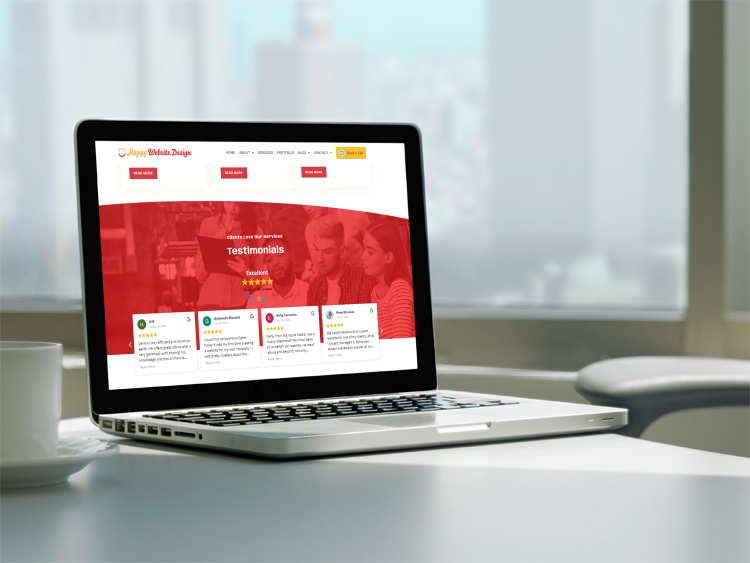Create a Balanced Online Experience With Holistic Website Design
In today's electronic landscape, producing a balanced online experience through holistic web style is vital for meeting the varied demands of users. By prioritizing availability and aligning content approach with customer choices, companies can significantly boost engagement.
Recognizing Holistic Web Layout
This method takes into consideration not only visual aspects yet additionally performance, usability, and the emotional influence of the website on its users. By seeing an internet site as an interconnected ecosystem, designers can make sure that every part-- visual style, content, navigating, and interactivity-- functions harmoniously to satisfy user requirements.

Incorporating a holistic viewpoint involves recognizing the target market and their details demands, choices, and habits. It requires an analysis of exactly how users connect with different elements of the website and how these communications affect their overall experience. This strategy likewise takes into consideration the wider context in which the website runs, consisting of brand name identification, advertising techniques, and competitive landscape.
Inevitably, a holistic approach to internet design leads to a more engaging and reliable online visibility. By prioritizing the individual trip and fostering a smooth experience across all touchpoints, developers can produce internet sites that not just capture attention however additionally encourage sustained communication and complete satisfaction. This comprehensive approach advertises lasting success and fosters brand name loyalty.
Key Concepts of Customer Experience

One vital principle is use, which highlights the importance of simple navigating and clear capability. Web sites must be very easy to browse, permitting customers to locate info promptly. This is closely connected to uniformity, where design aspects, such as buttons and food selections, ought to continue to be consistent throughout the website to boost experience and ease of use.
Another considerable principle is responses, making sure that users are informed concerning their interactions. Whether with aesthetic cues or alerts, feedback reinforces a feeling of control and contentment. Furthermore, the principle of pecking order dictates that details should be organized rationally, guiding individuals via material efficiently.
Finally, emotional layout plays a critical role in UX. By stimulating positive emotions with looks and communications, developers can create unforgettable experiences that promote customer commitment - website development consulting. By adhering to these principles, internet designers can create all natural experiences that resonate with customers and fulfill their purposes
Relevance of Accessibility
Accessibility is a critical facet of internet design that guarantees all individuals, regardless of their capabilities or disabilities, can communicate with digital web content successfully. By prioritizing availability, internet designers develop inclusive atmospheres that accommodate diverse user needs, improving total customer experience.
An available website abides by established standards, such as the Web Content Access Guidelines (WCAG), which advise techniques like offering message choices for non-text web content, making sure sufficient color comparison, and allowing key-board navigation. These techniques not only serve customers with specials needs, such as aesthetic or acoustic problems, however also benefit various other individual groups, consisting of those with situational restrictions or older adults.
Moreover, the significance of access prolongs beyond moral factors to consider; it likewise impacts business end results. A comprehensive site can reach a more comprehensive target market, inevitably resulting in increased engagement and conversions. In addition, ease of access conformity decreases the threat of lawful effects connected to discrimination.

Integrating Web Content Strategy
Producing an inclusive electronic environment naturally causes the need of a durable content approach that lines up with customer needs. An efficient content approach acts as the backbone of holistic website design, guaranteeing that info is not only obtainable but also appealing and appropriate. It requires a deep understanding of the target audience, including their preferences, behaviors, and possible barriers to access.
To integrate a web content strategy efficiently, organizations need to prioritize user-centric web content production. This can be accomplished with comprehensive audience research study, which informs the kinds of web content that will reverberate with customers. Additionally, web content must be structured logically, making use of clear headings, bullet factors, and succinct language to enhance readability.
Routine audits of web content effectiveness will certainly aid in refining methods, making certain the web content stays fresh and aligned with user assumptions. By prioritizing a cohesive content strategy, organizations can produce a balanced online experience that cultivates engagement and availability for all users.
Determining Success and Interaction
While a well-executed web content approach forms the foundation of all natural internet design, determining success and interaction is essential for evaluating its performance and directing future enhancements. Secret performance indications (KPIs) such as web page views, bounce rates, and typical session period supply quantitative insights right into customer actions. These metrics highlight which content resonates most with individuals and where prospective rubbing points may exist.
In addition, qualitative actions, such as customer feedback and studies, can supply much deeper insights right into user fulfillment and engagement degrees. Tracking social media sites interactions and conversion prices additionally aids gauge the performance of content in driving desired activities, whether that be purchases, sign-ups, or information requests.
Making use of devices like Google Analytics, heatmaps, and A/B testing can enhance understanding of user communication patterns and preferences. This data enables web designers and material planners to iterate on their styles, making sure that the online experience remains user-centered and straightened with useful reference service objectives.
Verdict
To conclude, a balanced online experience through holistic web style necessitates the integration of aesthetics, performance, and functionality. By focusing on user needs and availability, developers can create interconnected ecosystems that boost interaction and satisfaction. A well-aligned content technique even more adds to a natural individual experience, while regular responses mechanisms are crucial for cultivating commitment. Eventually, this Check This Out thorough strategy not just raises individual complete satisfaction yet additionally strengthens brand identification in a significantly competitive electronic landscape.